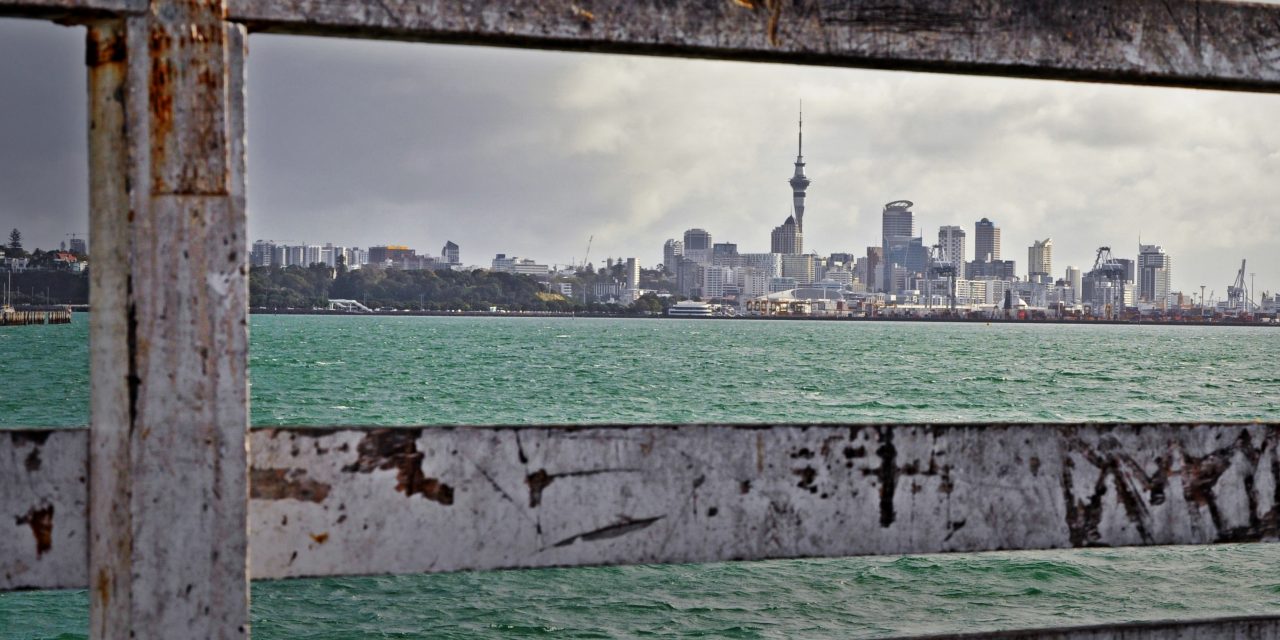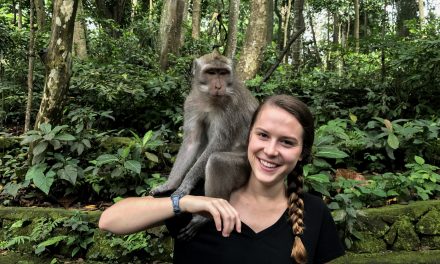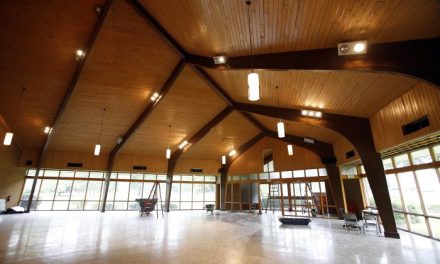PHOTO ESSAY BY
WILLIAM ALEXANDER
There’s the South and then there’s The South.
From Tuscaloosa, Alabama in America’s Deep South to the southern fringes of theSouth Pacific, 16 UA Honors College students ventured into the cities, towns and countryside of New Zealand for a cultural understanding study abroad program this past May.
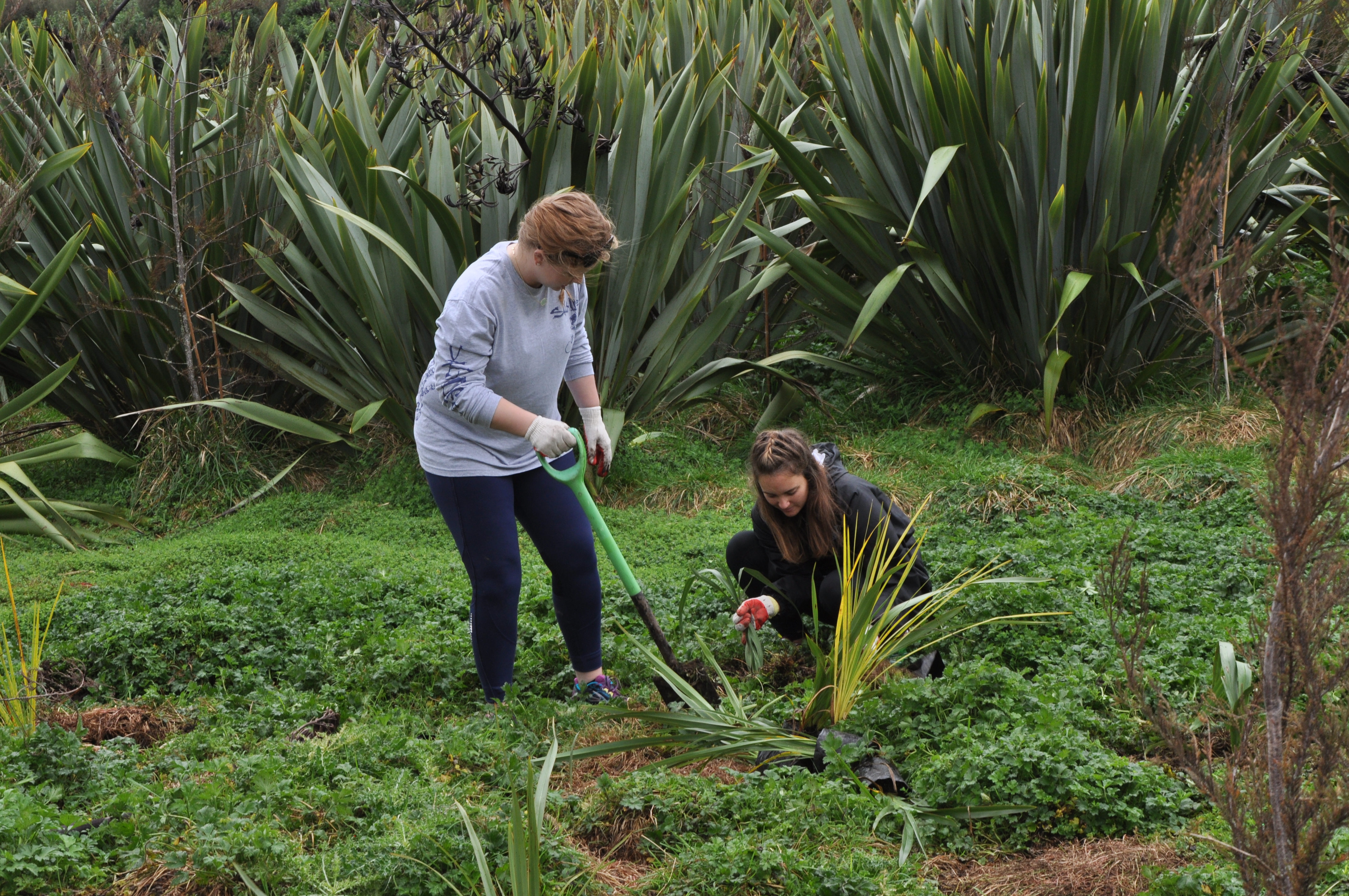
Emily Casson and Michaela McLaughlin plant a flax plant in a wetland near Hamilton, North Island. This day included a service project involving planting natural vegetation in an area that had previously been clear-cut for the purposes of farming. By bringing natural vegetation back to the wetland areas unsuitable for farming, the goal of this project is to return some semblance of the natural ecology to the area. In 10 years, this particular wetland can grow to be a thriving ecosystem for local wildlife that have faced a destruction of their habitat since the arrival of humans to New Zealand.
The students and faculty members pose for a group photo in front of a Hobbit hole on the Hobbiton filmset. A picturesque village first built temporarily for the filming of The Lord of the Rings trilogy, the set was reconstructed in permanent form during the filming of The Hobbit series, this time with the ability to serve as a tourist attraction in the town of Matamata once filming had wrapped. The location was chosen by director Peter Jackson for its rustic nature and hilly landscape in order to recreate the setting of J.R.R. Tolkien’s fantasy series.

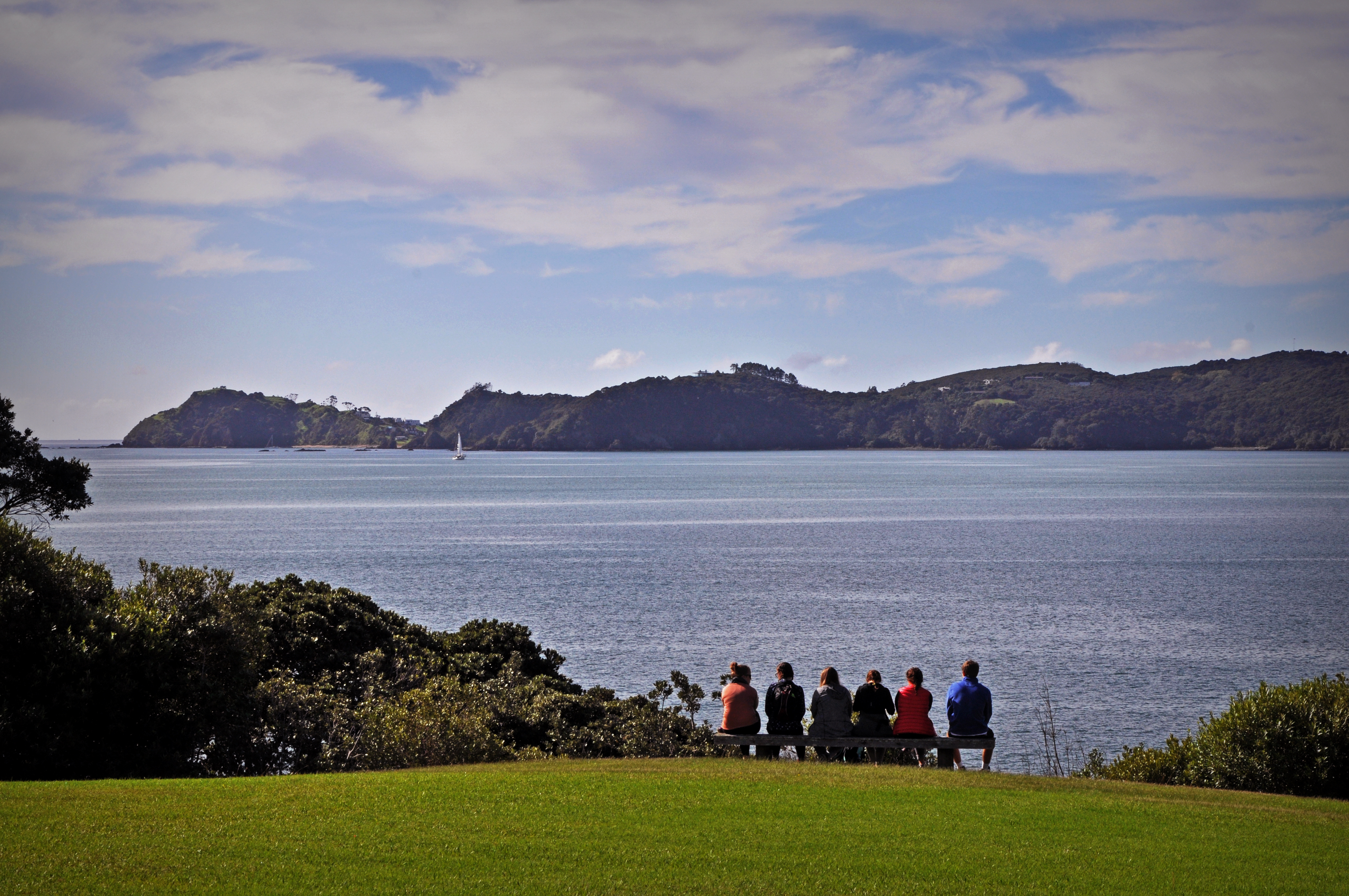
Students gaze across the Bay of Islands from the Waitangi Treaty Grounds. The bay, one of the first areas of New Zealand to be permanently colonized by European settlers, was visited in the 1760s by Captain James Cook, who counted over 100 islands in the bay. The Treaty of Waitangi, considered to be the founding document of the British government in New Zealand, was signed by Maori tribal leaders and representatives of the British crown on this site in 1840. Here, students learned the history of the arrival of Europeans to New Zealand and the series of conflicts that arose following their settlement.
A rope swing sits along the harbor of Russel, the oldest European settlement in New Zealand. A short ferry ride from the town of Paihia, Russel was the first seat of government for the British colonial governors, and is home to a flagpole of great historical note. When the Maori tribal leaders declared the independence of New Zealand prior to the establishment of colonial rule, a Maori leader gifted the flag pole to James Busby, the first British resident as a sign of goodwill. Yet, as the relations between Maori and British rulers deteriorated, as a signal of their discontent with British policies the Maori chopped down the flagpole on several occasions and burned the town, leading to the Flagstaff Wars.
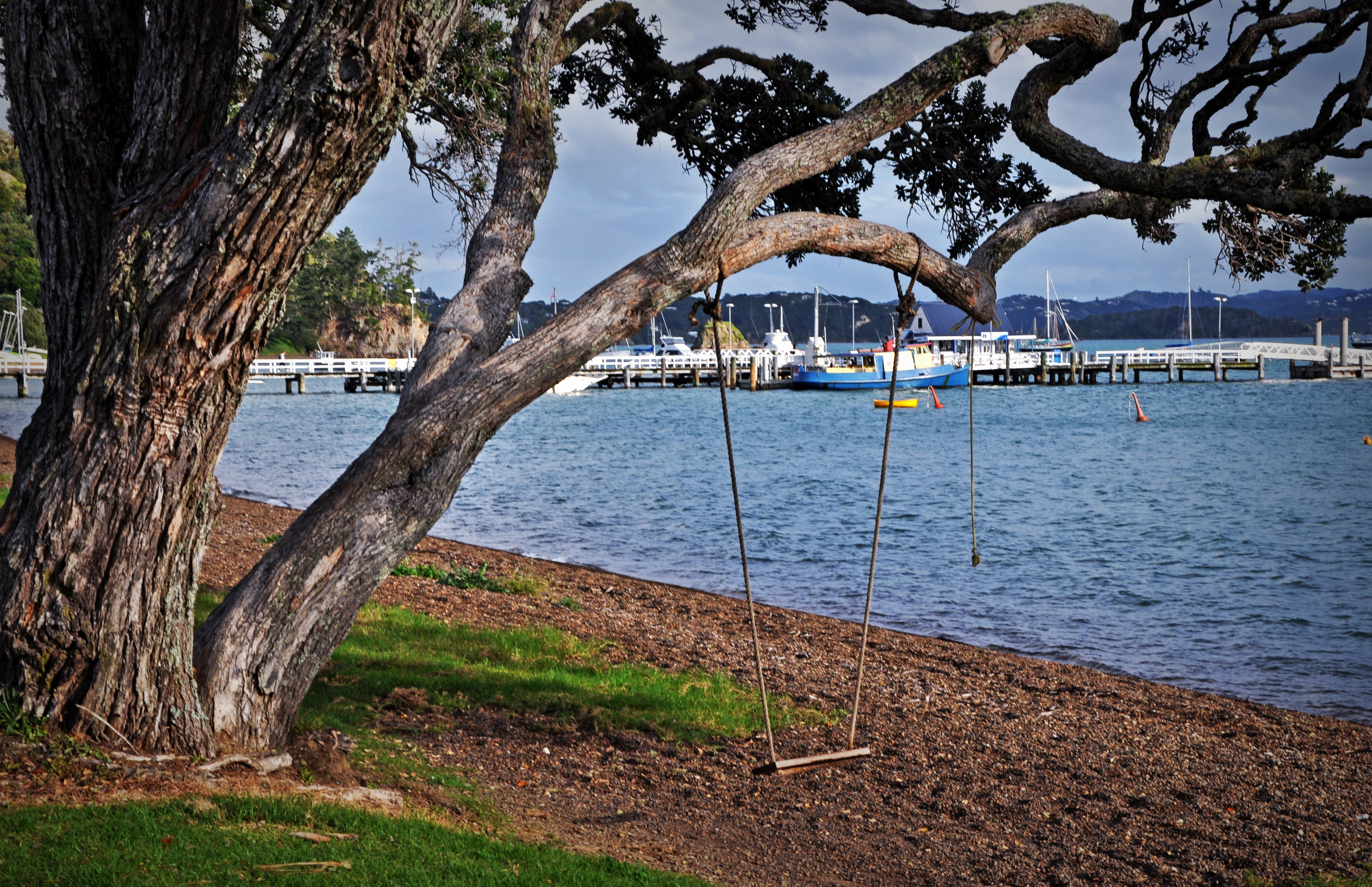
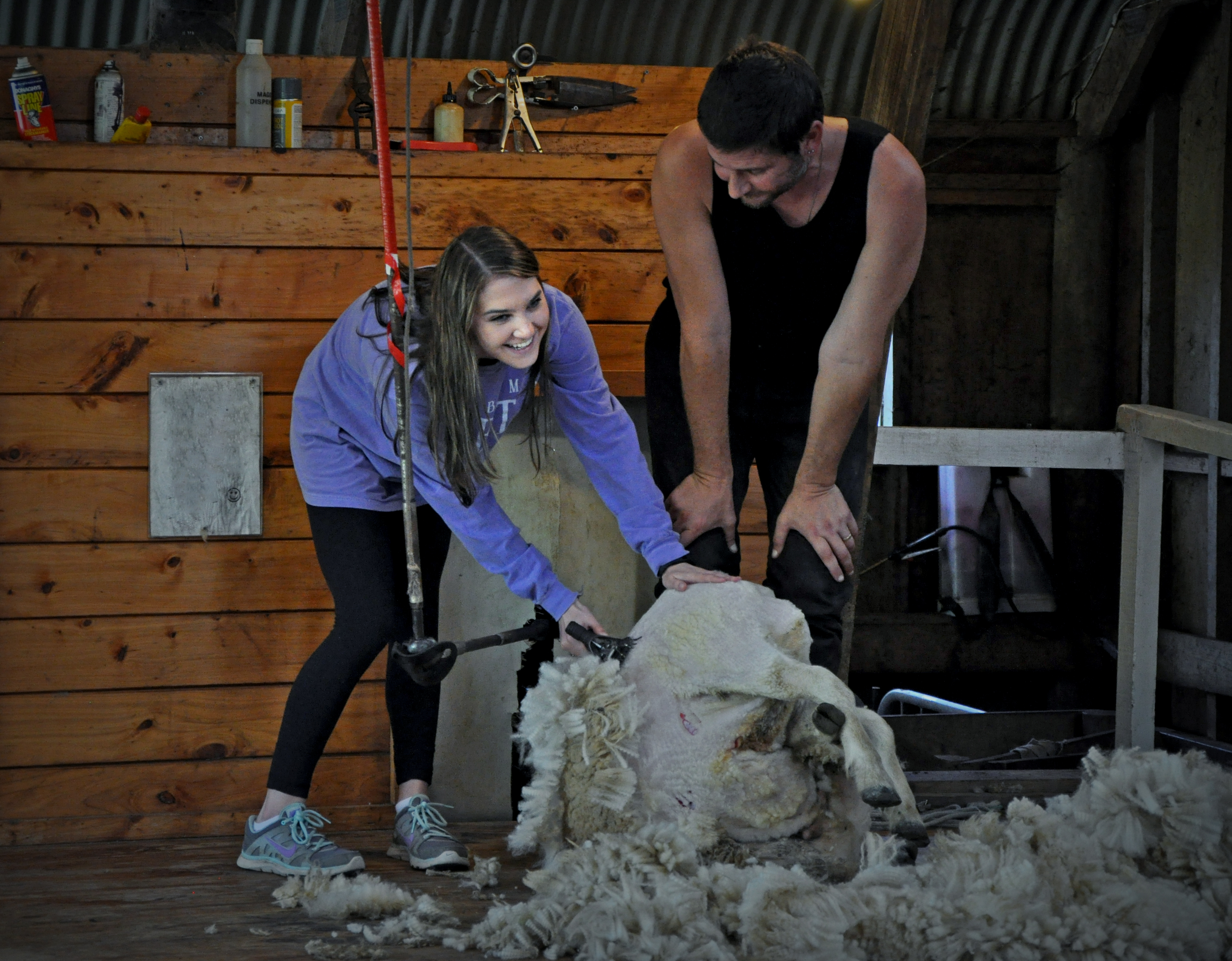
At Sheepworld, Sydney Goldstein learns the proper technique for shearing a sheep. Sheep play a critical role in New Zealand agriculture, with more residing sheep in the country than people. Prior to learning about shearing, the class was introduced to the raising and work life of herding dogs. Trained rigorously from 6 weeks of age, a fully grown herding dog can manage hundreds of sheep across very large ranches, called “stations” in New Zealand. Sheep shearers are in high demand, with special work visas granted to manage the overwhelming number of sheep being sheared in any given season.
The Auckland skyline as seen from across the Auckland Harbor. The Sky Tower, the tallest building in the Southern Hemisphere, features an open deck including the SkyJump, a controlled free fall from 192 meters above a pedestrian plaza below, which several of the students completed. The largest city in New Zealand, Auckland is a major world economic hub and is the primary financial center for the country. As New Zealand is very dependent on marine trade and commerce, the harbor serves as one of the busiest ports in the world.
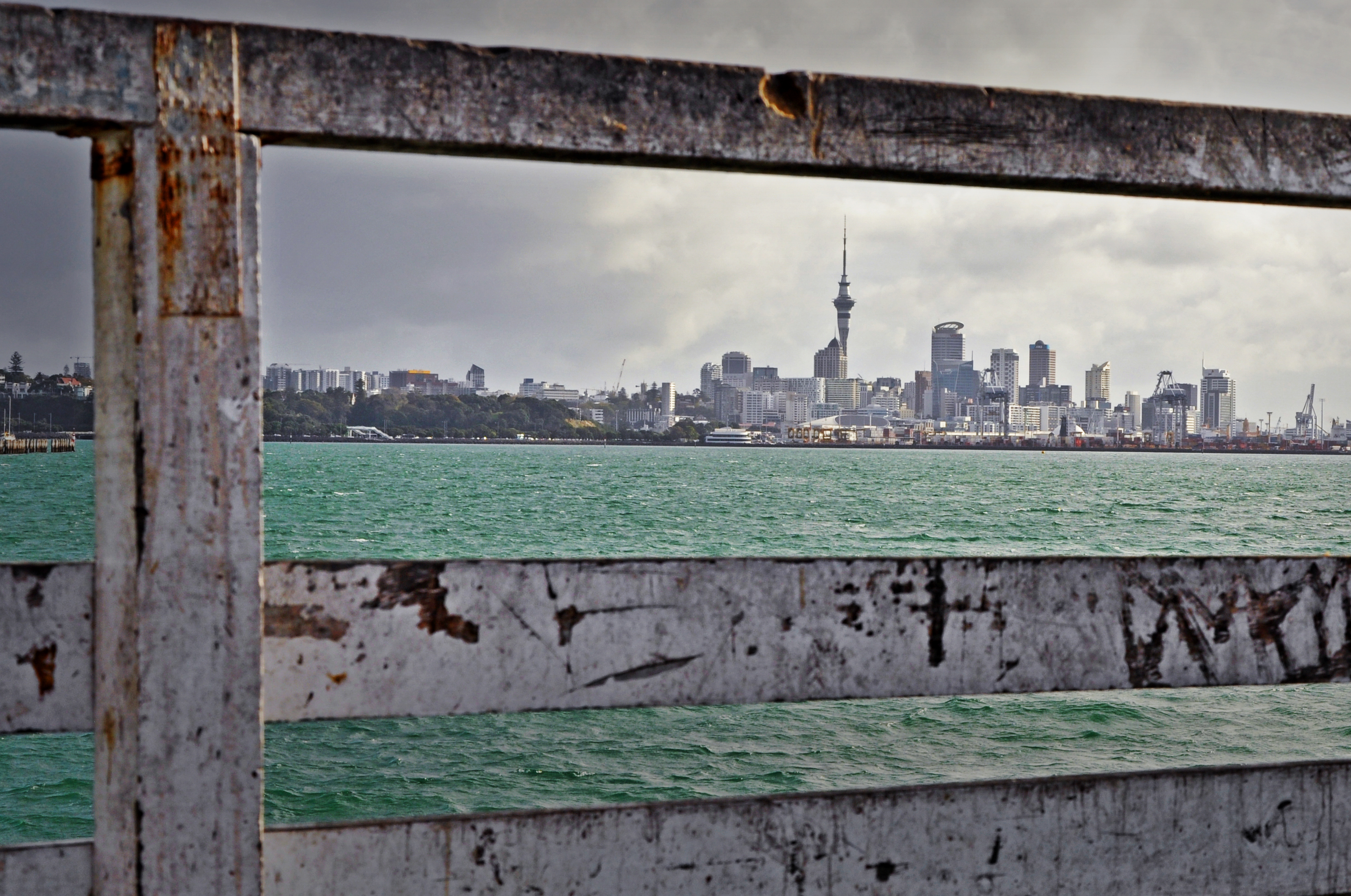
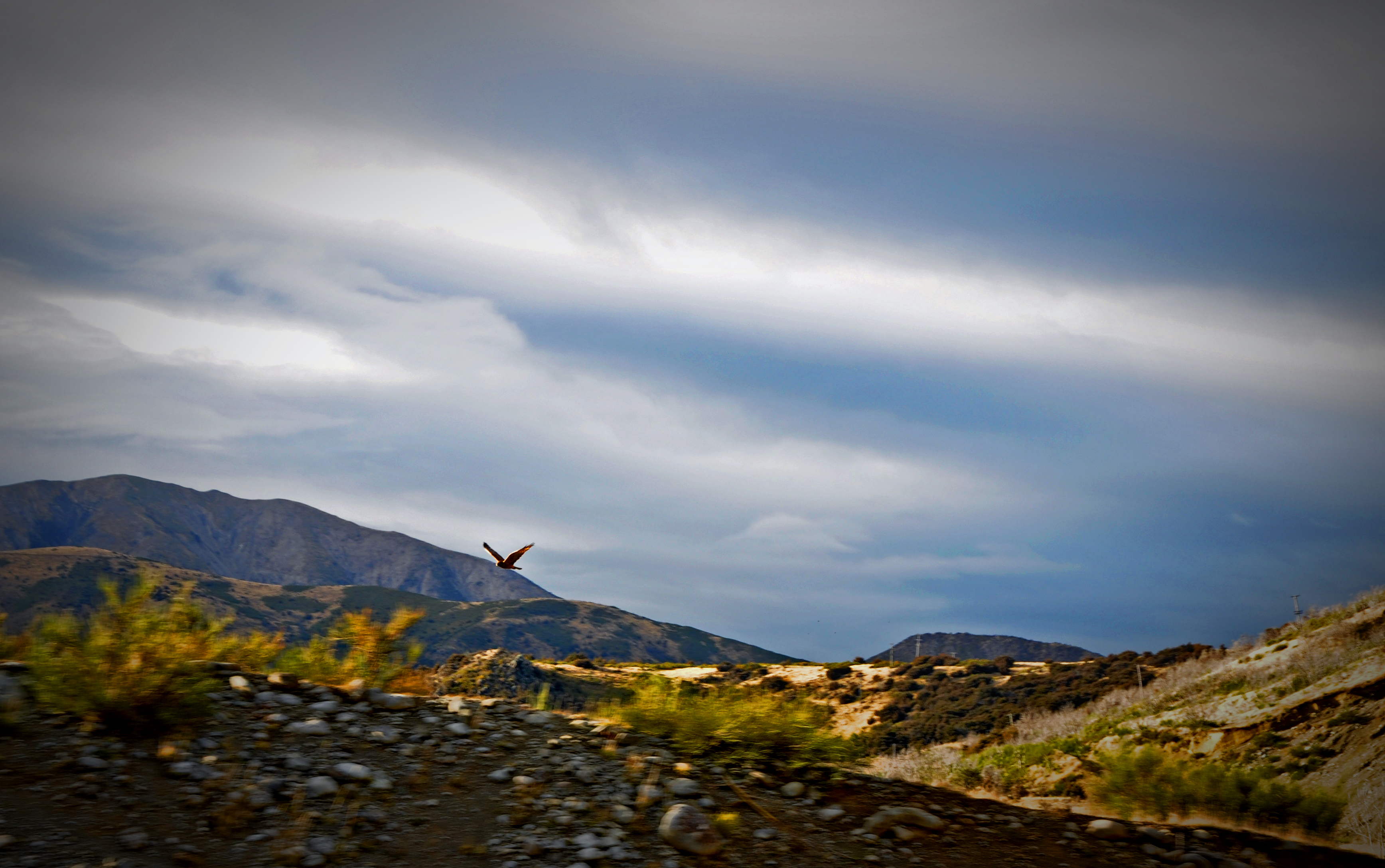
A hawk takes flight high above the Southern Alps. Prior to human arrival in New Zealand, birds were nearly the only animals on the islands; when humans arrived, bringing mammals alongside, several species of bird began to face the threat of new predators, a problem that persists to this day. This photo was taken from aboard the TranzAlpine, a scenic train running from Christchurch on the east coast to Greymouth on the west coast. The train travels through the Canterbury Plains before crossing the Southern Alps, traversing the fall line through the Otira Tunnel before descending into Greymouth.
Along the coast of Kaikoura, the whale Tutumairekurai (Tutu for short) descends into the depths of the Hikurangi Trench. Tutu’s name, meaning “special ocean dweller,” also refers to Hector’s dolphin, one of the smallest and rarest dolphins in the world which also are native to this area. Kaikoura is a world favorite for whale and dolphin spotting, as the depths of the trench provide for large supplies of krill these mammals feed on. The extremely diverse landscape of the Southern Island can be clearly seen in this photo, where the mountains of the Southern Alps run adjacent to the beaches of Kaikoura.
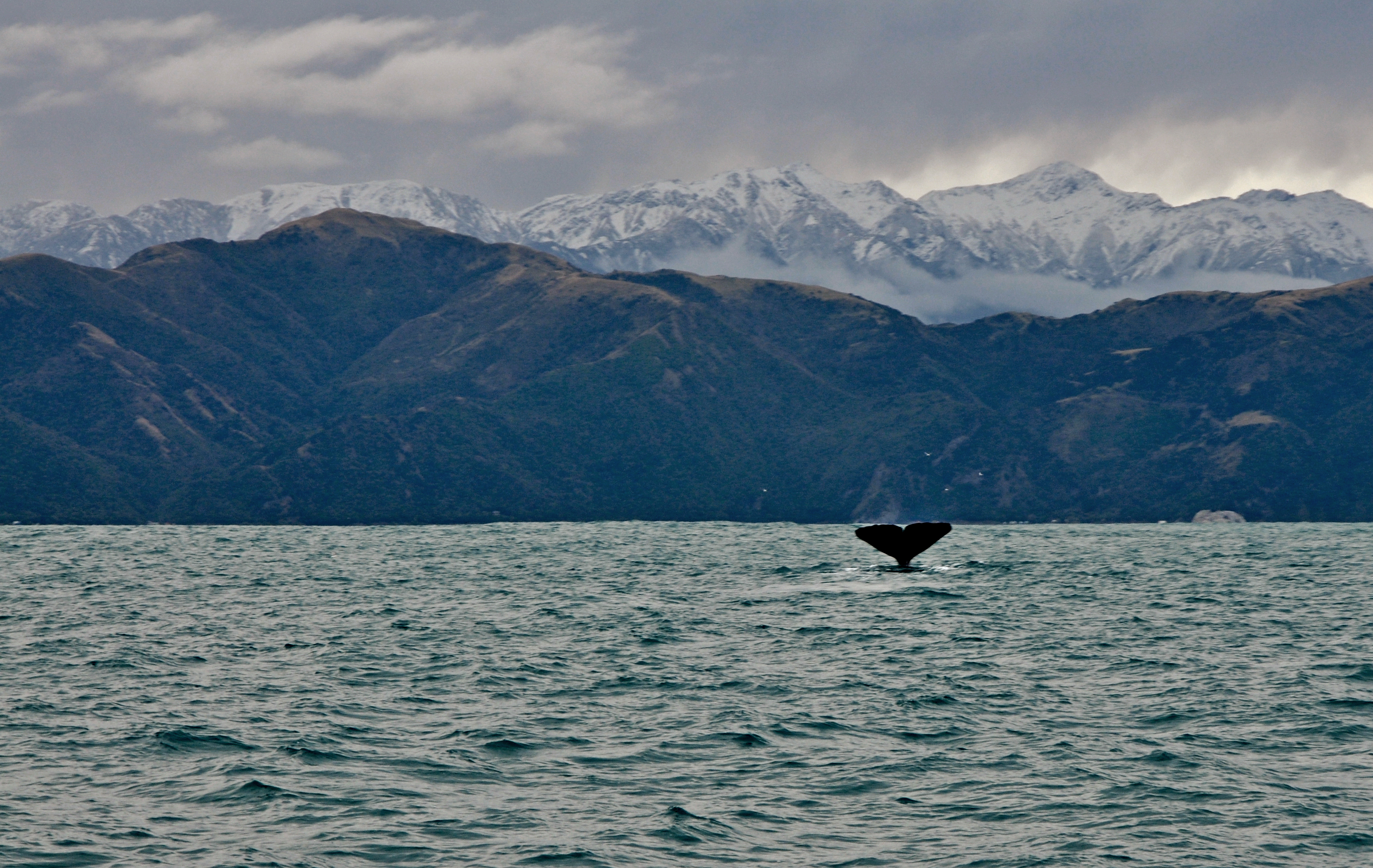
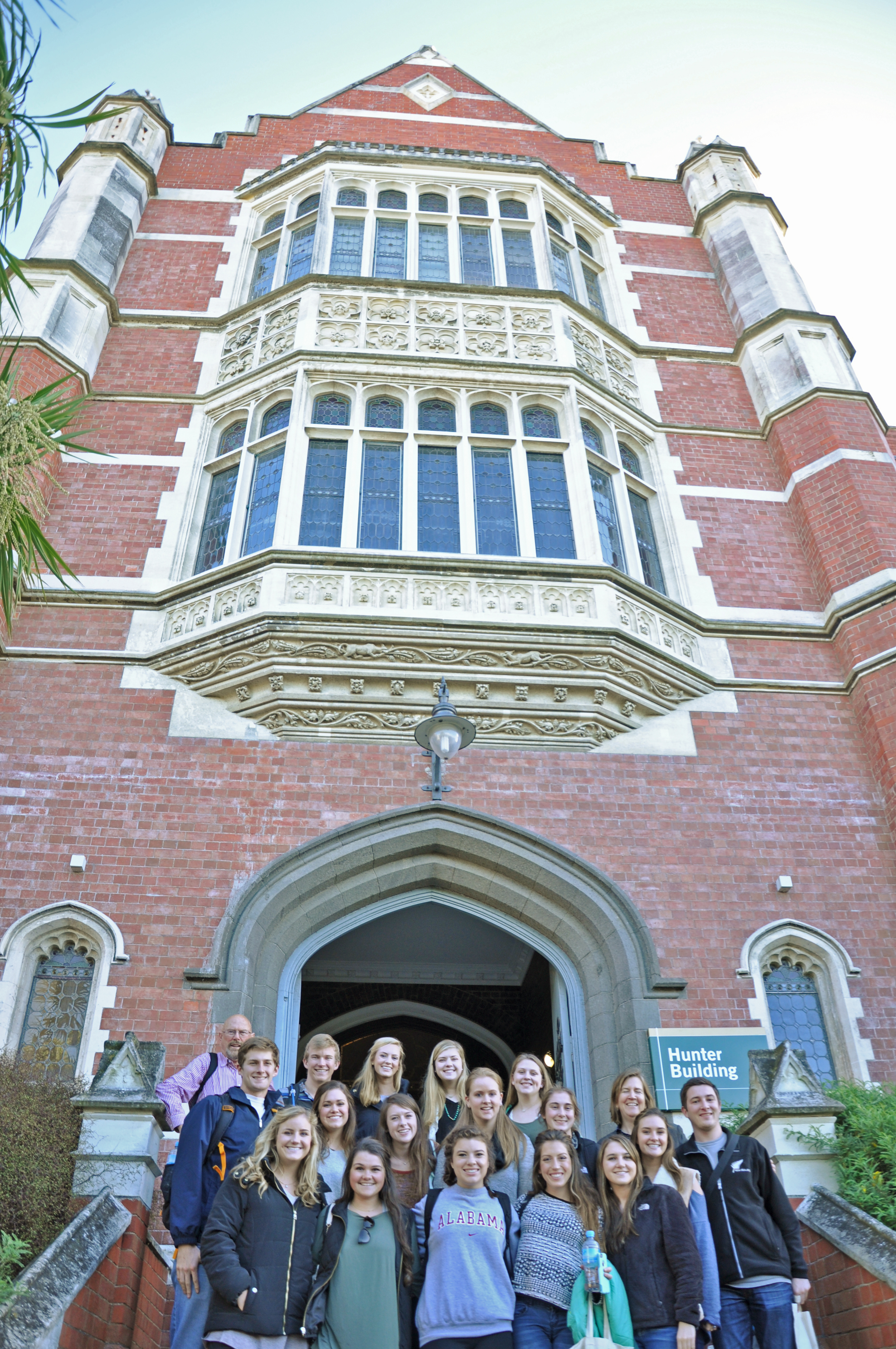
The students and faculty pose in front of Hunter Building on the campus of Victoria University in Wellington. On this day, the students engaged with the students of the Victoria International LeadershipProgram, holding a forum to discuss the cultural similarities and differences between the United States and New Zealand. The discussion focused on the four primary topics of the trip: neighborhood, community, self-efficacy and environmental sustainability. Through these discussions, the students on both sides gained insights into multiculturalism and developed a better understanding of their peers on the opposite side of the world.
An Otago Highlanders rugby player is tackled by a Wellington Hurricanes player in a rematch of the previous year’s Super Rugby Championship. Rugby union, one of the most popular sports in New Zealand, plays a critical role in the culture of the country. In attending a game, the students got to experience firsthand the similarities to the environment of Alabama football, as well as the stark differences. For example, the game kicked off with little fanfare, and several students noticed that a national anthem was not played beforehand. Yet, when the Hurricanes ended up securing victory on a last-second try, the crowd was sent into an uproar that rivaled the loudest of crowds in Bryant-Denny Stadium.
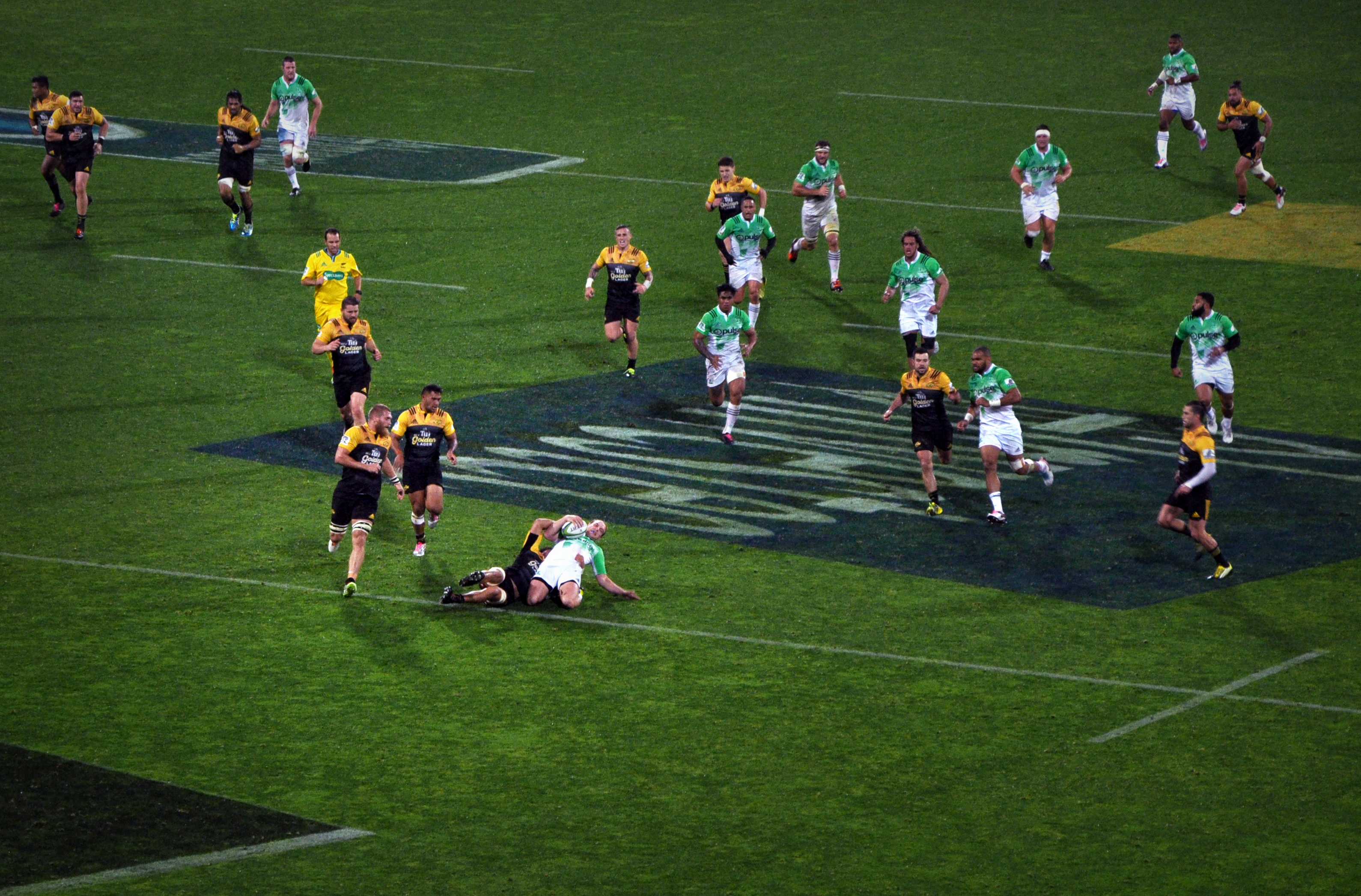
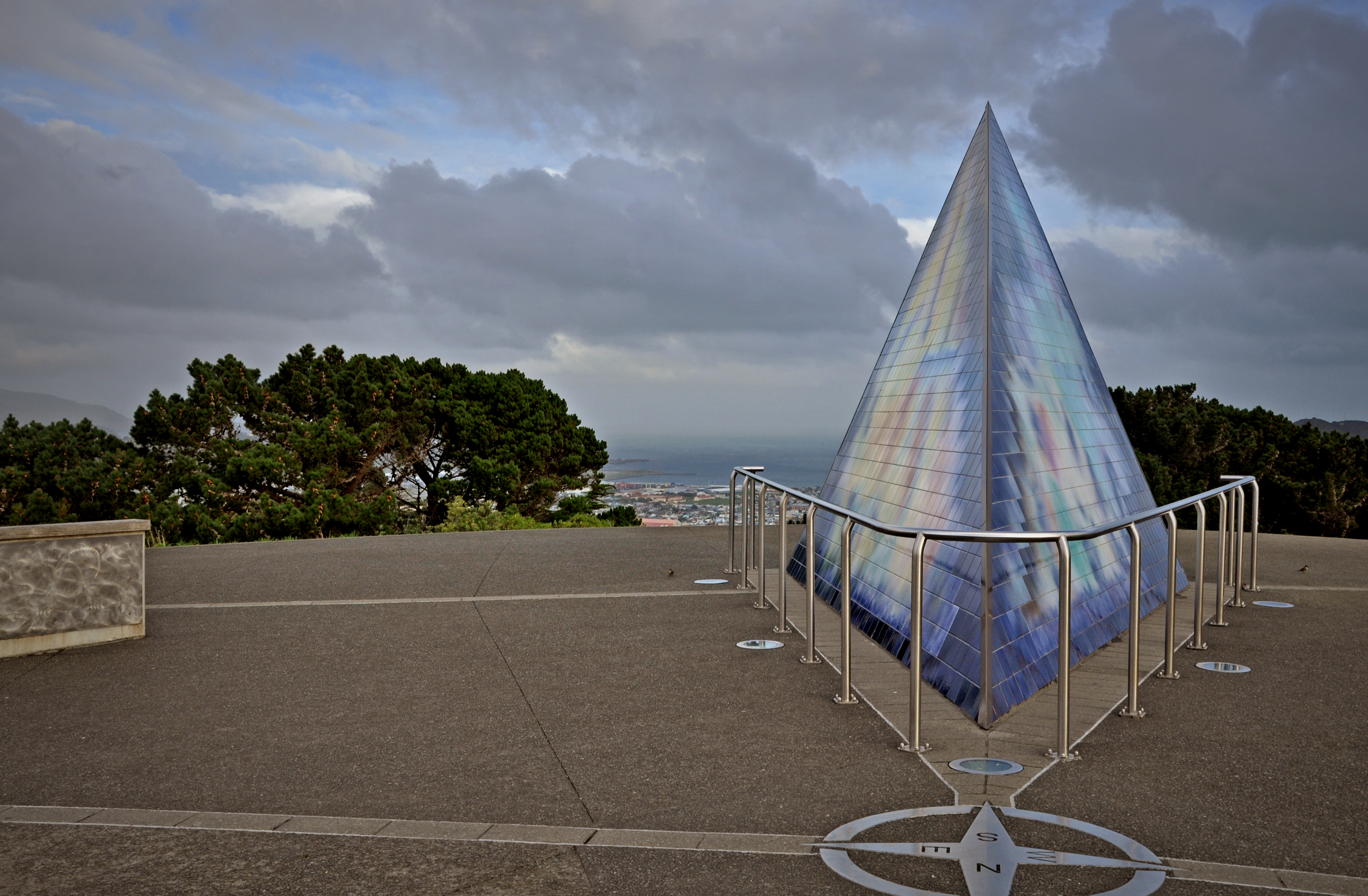
The Richard Byrd Memorial is viewed from the Mount Victoria lookout in Wellington. The monument, which points toward the South Pole, was erected to honor the contributions or Byrd, an American polar explorer who used New Zealand as his base of operations. New Zealand continues to have a strong presence in Antarctic exploration, as it serves as the point of civilization closest to the icy continent and is often the source of supplies for researchers stationed there. Mount Victoria, looking out over the Wellington Harbor, has at various times served as a lookout for the city and was also used for filming two scenes in Peter Jackson’s The Lord of the Rings trilogy.
This trip will be available next May. For more information, visit www.international.ua.edu.

